
http://www.iaeme.com/IJM/index.asp 1 editor@iaeme.com
International Journal of Management (IJM)
Volume 8, Issue 1, January–February 2017, pp.01–12, Article ID: IJM_08_01_001
Available online at
http://www.iaeme.com/ijm/issues.asp?JType=IJM&VType=8&IType=1
Journal Impact Factor (2016): 8.1920 (Calculated by GISI) www.jifactor.com
ISSN Print: 0976-6502 and ISSN Online: 0976-6510
© IAEME Publication
A STUDY ON HOW EMOTIONAL DISSONANCE
IMPACT WORK EXHAUSTION, JOB SATISFACTION
AND TURNOVER INTENTION AMONG IT’
PROFESSIONALS
M. Vennila
Ph.D. Research Scholar, BSMED, Bharathiar University,
Coimbatore – 641046, India
Dr. K. Vivekanandan
Professor, BSMED, Bharathiar University
Coimbatore – 641046, India
ABSTRACT
Emotional dissonance is the conflict between experienced emotions and emotions expressed to
conform to display rules. This study is an empirical examination of the how Emotional dissonance
impact IT professionals work exhaustion, job satisfaction and turnover intention. Data were collected
from 246 IT professionals in various industries from Coimbatore district. Positive emotional
dissonance and Negative emotional dissonance of IT professionals were conceptualized whereas how
emotional dissonance impact IT professionals work exhaustion, job satisfaction and Turnover
intention. The results shows that emotional dissonance impact IT professional work exhaustion.
Perceived work load, role ambiguity, role conflict, autonomy and fairness of rewards influenced IT
professionals Work exhaustion. IT professionals experienced reduced job satisfaction and increased
work exhaustion, experienced with turnover intention.
Key words: Emotional dissonance, Job Satisfaction, Role conflict, Turnover Intention, Work
Exhaustion
Cite this Article: M. Vennila and Dr. K. Vivekanandan, A Study on How Emotional Dissonance
Impact Work Exhaustion, Job Satisfaction and Turnover Intention among It’ Professionals,
International Journal of Management, 8(1), 2017, pp. 1–12.
http://www.iaeme.com/ijm/issues.asp?JType=IJM&VType=8&IType=1
1. INTRODUCTION
Emotions play a vital role in our social life. They act as filters of perception, affecting our conscious decisions
and, sometimes, even making decisions for us on their own. However, we often find ourselves in situations
where our spontaneous emotions, or expression thereof, (would) bring about negative consequences. The
range of tolerable emotions varies with culture, gender, and age. In a lot of areas of life, display of inadequate
emotions leads to adaptation troubles. Emotion work is considered as quite significant because emotional

M. Vennila and Dr. K. Vivekanandan
http://www.iaeme.com/IJM/index.asp 2 editor@iaeme.com
performance is an important aspect of the jobs for IT professionals. Emotion work can be defined as the
process of regulating feelings and expressions as part of the work role (Grandey, 2000). More precisely,
Morris and Feldman (1996) define emotion work as “the effort, planning and control needed to express
organizationally desired emotion during the interpersonal transactions” (1996). These rules for which
expression is appropriate in a certain working context are referred to as feeling rules or display rules. The
expression of an appropriate emotional display can be achieved through, Deep acting and Surface acting and
the expression of genuine emotion. Ashforth and Humphrey (1993) point out that in most cases, the
expression of emotion is a spontaneous process that does not cost any effort. Surface acting involves
changing the observational expression while the inner feelings remain unchanged (fake smiles).
Consequently, deep acting refers to the effort of changing these inner feelings in order to comply with the
display rules (i.e., actively trying to replicate from a customer’s point of view), (Hochschild, 1989). In this
case, not only the emotional expression but also the inner feelings are regulated. Emotion work has positive
and negative concerns. Hochschild (1983) was the first who described the possible negative consequences
of emotion work for employee well-being. She wrote that the “persistent, structural discrepancy between
which emotions need to be displayed and what is really felt can produce alienation from one’s own authentic
emotions”. Emotions have a signal function that can be compared to, for example, pain signals. If these
signals are neglected due to the performance of emotion work, employees can suffer from energy depletion
and burnout on a critical level. In this case, the difference between displayed and felt emotions as part of the
work role has been named and identified as ‘emotional dissonance’. Emotional dissonance is defined as the
inconsistency and the conflict between the experienced emotions and the emotions expressed by an
individual (Ashforth & Humphrey, 1993). Since 1981, organisational behaviour researchers have
approached the topic of emotions in the workplace from several vantage points. There has been increasing
attention paid to the employees’ feelings and expressions with the increasing managerial emphasis on
customer service, which involves employees’ ability to express positive, upbeat emotions to customers, a
process called “emotional labour” (Hochschild, 1983). Emotions are responses to specific events that have
either positive or negative meaning to the individual. They are generally more vigorous, of shorter time
duration, and more intense than moods or feelings, and emotional responses involve several psychological
subsystems (Barsade, Brief, & Spataro, 2003). Some researchers see organisations as a sharing ground for
emotions, as organisations involve complex relationships that are often competitive and compulsory – and
employees often must interact with a range of people not of their choosing (Stearns & Stearns, 1986).
Another strong aspect is that organisations typically involve pressure surrounding deadlines and
productivity, and high personal stakes, and relate these factors to an individual’s self-identity to change
perceptions of organisational achievement.
1.1. Defining Emotional Dissonance
Emotional dissonance is defined as “the conflict between expressed and experienced emotions‟ (Abraham,
1998a). It arises when an employee’s displayed emotions represent the obeying organizational rules, but do
not represent his or her actual feelings (Rafaeli & Sutton, 1987). Emotional dissonance sparks when service
providers experience a conflict between the emotions they feel about their job and the required emotions the
organisation has determined to be acceptable for display (Rafaeli & Sutton, 1987). A number of experiential
consequences may occur from emotional dissonance. Three key researchers in particular, have shown
emotional dissonance to be an antecedent to employee burnout or exhaustion (Abraham, 2000; Morris &
Feldman, 1996). Ashforth and Humphrey (1993) define emotional dissonance as “the clash of actual
emotions and those that organisations expect one to ‘put on’ while on the job”. According to Morris and
Feldman (1996), organisations are continually willing to direct and control how employees present
themselves to others, alongside Hochschild (1983), who refers to the way organisations have a demanding
and heavy expectation on the way people present and perform emotionally. As a consequence, a key factor
of these actions carried out by many workers has become the result of emotions that are formed and desired
by their organisation. Ashforth and Humphrey (1993) point out that emotional dissonance peaks when in
industries that include face to face interaction with others in the context of customer-contact transactions,

A Study on How Emotional Dissonance Impact Work Exhaustion, Job Satisfaction and Turnover Intention Among
It’ Professionals
http://www.iaeme.com/IJM/index.asp 3 editor@iaeme.com
such as retail or service-related work. More specifically, emotion work refers to the psychological efforts
necessary to express organizationally desired emotions during interactions with the public (Morris &
Feldman, 1997; Zapf, 2002).
1.2. Effects of Emotional Dissonance
Emotional dissonance is the feeling of unease that occurs when someone evaluates an emotional experience
as a threat to his or her identity (Ashforth & Humphrey, 1993; Morris & Feldman, 1996). Another key
theorist in the field of consequences that emotional dissonance may cause is (Frijda, 1986). (Frijda, 1986)
anticipated a model in which the emotion dissonance process is unfolded in a step by step fashion. His theory
starts with asking why an emotion occurs, and from here an evaluation of the first felt emotion can begin. In
other words, the emotional dissonance experience is the source of this uncomfortable feeling. As soon as the
dissonance is manifested, the individual has to cope with two parallel feelings: first, the prolonged experience
of the specific emotion that is the focus of evaluation; second, the feeling of unease. This clearly indicates
that emotional dissonance is present, and somewhat felt in a physical sense. Someone who experiences
emotional dissonance feels ill at ease, and uncomfortable, but not necessarily aware of where that feeling
comes from (Oatley, 1992). The latter feeling tells the individual that there is a mismatch between his identity
concerns and the emotional experience. In other words, the feeling of dissonance signals that this particular
emotion draws awareness that something has to be done to combat this uncomfortable feeling. It motivates
dissonance reduction, which reduces this feeling as well as regulating it (Jansz & Timmers, 2002).
Dissonance tolerance refers to the ability to withstand the discrepancy or discomfort of expressing desirable
emotions when they differ from the emotions actually experienced. In other words, dissonance tolerance is
the degree to which a service worker does not feel troubled or bothered by the need to pretend emotions that
are not genuinely felt. (Jansz & Timmers, 2002). Emotional dissonance is directly linked to emotional
exhaustion and is commonly experienced by service workers (Abraham, 1999; Hartel et al. 2002; Morris &
Feldman, 1997). Hartel et al. (2002) tested this specific hypothesis that emotional dissonance mediates the
relationship between emotional labour and emotional exhaustion. Clearly, this perspective considered
emotional dissonance to be an outcome of performing emotional labour and is distinct from the previously
discussed perspectives. Although Hartel et al. (2001) presented evidence in support of their hypothesis, the
emotional labour scale then adopted for the purpose of the study did not clearly discriminate between surface
and deep acting. Hartel et all’s (2001) study examines surface acting as the component of emotional labour
associated with emotional exhaustion and further examines the mediating role of experienced dissonance.
Surface acting provides a situation where employee behaviour contradicts emotions felt, and is consistent
with the general perception of the conditions that stimulate emotional dissonance. In this study, it proposed
that dissonance is distinct from surface acting and is a consequence of surface acting, but only under specific
conditions. In this case, the emotional dissonance is viewed as a conflict between the required and felt
emotions. This links the requirement imposed by the IT organisations for specific emotional display and the
employee’s actual emotional state specifically when it is not compliant with the organisation’s requirements.
The conflict between the emotion felt and the expected emotions displayed is considered to be the demand
condition for emotional expression and management. The type of acting that the employee elects to undertake
can be viewed as the performance component of emotional labour. The dissonance arising, or not arising,
from performing emotional labour can then be viewed as the consequent experience. As mentioned earlier,
behind this dissonance arising and nor arising, is a certain range which helps detect the scale of emotional
dissonance in this particular situation. As suggested above, the experience of performing emotional labour
could be either positive or negative, it is important to discuss those conditions which determine the affective
nature of the associated outcome, that is, those conditions under which dissonance may or may not be
experienced. Emotional labour is said to be unpleasant for the employee as it stimulates personal expression
while organisation norms are also being implied (Morris & Feldman, 1996). Displaying unfelt emotion as
the core of emotional dissonance has negative consequences due to the feelings of alienation from one’s true
self when engaging in emotional labour. Emotional dissonance has also been said to be a type of role conflict
which has been linked to emotional exhaustion (Lewig & Dollard, 2003; Morris & Feldman, 1996). In

M. Vennila and Dr. K. Vivekanandan
http://www.iaeme.com/IJM/index.asp 4 editor@iaeme.com
addition to this, emotional dissonance is a consequence of negatively evaluating emotional experiences as a
threat to one’s identity (Jansz & Timmers, 2002). Evaluating emotional labour as a threat to individual
identity (Ashforth & Humphrey, 1993) is an entirely separate field of study in itself, and is consistent with
the perspective of emotional dissonance as an outcome of emotional labour. Considering emotional labour
in such a light contributes to the understanding operationalization of emotional dissonance. A study that
looked into the negative job outcomes of emotional labour and evaluated the mediating role of emotional
dissonance (Van Dijk & Brown, 2006). Display rules are said to exist when organisations have implicit or
explicit display guidelines in order to govern and direct employee behaviour in successfully performing roles
in an organizationally desired manner. These rules are known as emotional display rules and are used by
workers to guide their emotional display when engaging in activities to achieve organisational objectives
such as a service encounter (Schaubroeck & Jones, 2002). A service encounter is defined as “a transaction
between two or more parties, one representing the customer and the other as the organisation” (Schaubroeck
& Jones, 2002). When complying with organisational expectations, there is an attached sense of obligation.
Promises of rewards or even threats support the imposition of display rules (Hochschild, 1983). Threats may
come in the form of demotion or termination of employment when there is failure to conform to such
expectations. Rewards may take the shape of a financial bonus for goal achievement, (e.g. sales targets) or
promotion (Hochschild, 1983; Kruml & Geddes, 2000). The more rigid and imposing these display rules are
the greater sense of obligation and inflexibility for individual expression of emotion. This is particularly the
case when the emotional display required and those emotions felt by the employee, are incongruent
(Grandey, 2000). Display rules are important when considering emotional labour, as they have been argued
as leading emotional dissonance. Emotional dissonance is a ‘disturbing disequilibrium’ between expressed
and experienced emotion.
1.3. Emotional Dissonance among IT Professionals
The IT industry has become one of the most popular industries in the world and it is in the phase of
transforming the world to the next generation from a slow moving bureaucratic economy to a land of
innovation. The transformation has been so drastic that no other field in the world is independent without
the help of information technology. Today’s Information Technology professionals are required to be
multitalented with knowledge in more than one specific skill. IT workers need to be in frequent touch with
their customers and has to think from the customer’s point of views. IT professionals are expected to manage
their emotions to obtain a facial and physical expression that is neutral, solid, and controlled. For IT sector
increasing work exhaustion, percentage of turnover is among the basic challenges they face today (Aşkun,
2007). Recent studies have differentiated various dimensions of emotion work while most of them comprise
the frequency of emotion expression and emotional dissonance (Brotheridge & Grandey, 2002; Bussing &
Glaser, 1999). Due to these reasons, pressurized deadlines, personal conflicts, etc. they are susceptible to
emotional dissonance. Emotions and emotional displays have become an important focus of organizational
research. IT Employees need to engage in a certain degree of emotion in order to generate the appropriate
feelings (Conger and Kanungo, 1988, Lashley, 1999) and to follow the required display rules (Hochschild,
1983; Ashforth and Humphrey, 1993; Morris and Feldman, 1996a; Grandey, 2000).
1.4. Work Exhaustion in the IT Environment
Although exhaustion can occur in various work environments, the popular press and the research literature
suggest that technology professionals are particularly vulnerable, A special report on burnout in
InformationWeek (McGee 1996) proposed that virtual office technology (e.g., home PCs and laptops with
modems, faxes, beepers, and cellular phones) and a greater-than-ever demand to keep up with changes in
technology contribute to a problem of burnout among technology professionals. Another IT periodical
(Fischer 1998) recently reported results of a survey of 1,180 networking professionals in which 94% of
respondents indicated they work in deadline or crisis mode at least some of the time (12% indicated "always,"
50% "often," 32% "sometimes," 6% "rarely," and 0% "never"), In addition, 84% of the respondents reported
that they bring work home or work nights and weekends at least some of the time (15% indicated "always,"

A Study on How Emotional Dissonance Impact Work Exhaustion, Job Satisfaction and Turnover Intention Among
It’ Professionals
http://www.iaeme.com/IJM/index.asp 5 editor@iaeme.com
39% "often," 30% "sometimes," 14% "rarely." and 2% "never"). One network administrator provided a vivid
illustration of his work environment: "I've tried to get my boss to change deadlines.., [but] it doesn't work, I
go in to talk and end up getting two or three more jobs, without ever resolving the original issue" (Fischer
1998, p, 59). Moreover, IT workers are expected to keep technologies working and computer applications
functioning around the clock in organizations, Workers can be on call 24 hours a day, seven days a week.
The InformationWeek article quotes a systems programmer describing his work situation: You're expected
to keep your beeper on and make yourself available on weekends in case there's a problem….Even when
you're going on vacation, the boss wilt say. Leave us your number in case something comes up.' (McGee
1996) Technology is so widespread and vitally important in organizations that an IT professional providing
technical support can feel overwhelmed by demands. A systems administrator, interviewed in the
Information Week article, noted: "I can't even go into the tidies' room without someone asking me about
their printer." In addition to reports in the practitioner press, IS researchers examining the work environment
of technology professionals have found evidence of antecedents to exhaustion. Numerous studies have
reported evidence of work overload, role ambiguity, and rote conflict (eg. Bostrom 1981; Goldstein and
Rockart 1984; Ivancevich et al, 1983; Li and Shani 1991; Sethi et al, 1999; Weiss 1983), It has been
suggested that IS professionals in many organizations are continually asked to take on impossible workloads
and deadlines (Bartol and Martin 1982). Indeed, work overload and insufficient time to complete work have
been reported as common occurrences in the work environments of IS professionals (Ivancevich et al. 1983),
Further evidence is found in a field study of 109 IS managers in which work overload was reported to be the
major source of perceived work stress, followed by role conflict and rote ambiguity (Li and Shani 1991). A
contributing factor to the occurrence of role conflict and role ambiguity appears to be the boundary spanning
activities often required of technology professionals. One study found that significant variance in role
conflict was explained by the degree to which IS personnel were involved in boundary spanning roles
(Baroudi 1985) similarly, another study reported a significant relationship between boundary spanning
activities and role ambiguity (Guimaraes and Igbaria 1992). IS researchers also report that technology
professionals experience symptoms commonly associated with work exhaustion. Stress-related symptoms
reported by IS managers include feeling restless and unable to concentrate, feeling irritable and tense, feeling
tired and having low energy (Weiss 1983). In preliminary data on 69 professionals who had worked in IS
for at least 20 years and were currently holding expert or manager positions in IS, it was found that
approximately one-fourth of the subjects: felt used up at the end of the work day, felt fatigued when they got
up in the morning to face another day on the job. And felt they were working too hard on their job (Kalimo
and Toppinen 1995). In summary, the IS research literature, coupled with informal surveys and anecdotal
evidence from the practitioner press, provides strong evidence that antecedents to exhaustion are present in
the work environments of technology professionals. Furthermore, the practitioner literature and IS research
provide evidence of technology professionals experiencing symptoms commonly associated with
exhaustion. For these reasons, work exhaustion is believed to be occurring among IT professionals. Given
the correlation between exhaustion and turnover evidenced in the management literature, work exhaustion
in technology professionals is particularly worthy of investigation because it may be contributing to
increased turnover among these workers.
1.5. Work Exhaustion and Turnover Intention
Emotional exhaustion refers to as the sense of being tired and exhausted emotionally due to one’s
employment (Maslach and Jackson, 1981). Work exhaustion is one of burnout’s indicators which causes by
job related factors. Some job related factors are work load, role ambiguity, role conflict, job autonomy and
reward (Moore, 2000). Researchers also argued that work exhaustion as a dimension of burn out will reduced
job satisfaction (Maslach and Jackson, 1981), reduced self-esteem, reduced organizational commitment
(Sethi et al., 2004), increased turnover (Ahuja et al., 2007; Saragih, 2009), and reduced personal
accomplishment (Moore, 2002). Almost all previous study identified that technology professionals
experiencing higher levels of work exhaustion reported lower levels of job satisfaction and higher intentions
to leave organization. Although individual differences may also influence the occurrence of work exhaustion,

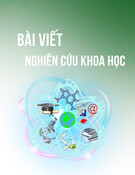

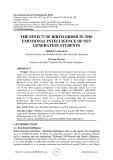
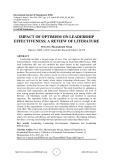
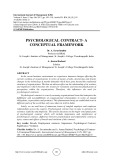

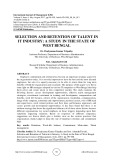

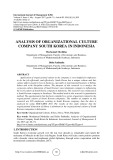



![Câu hỏi ôn tập Tâm lý học quản lý [chuẩn nhất]](https://cdn.tailieu.vn/images/document/thumbnail/2025/20251125/hathunguyen04er@gmail.com/135x160/25191764124376.jpg)
![Cẩm nang chăm sóc và nuôi dạy trẻ tăng động giảm chú ý [chuẩn nhất]](https://cdn.tailieu.vn/images/document/thumbnail/2025/20251118/kimphuong1001/135x160/4241763431998.jpg)

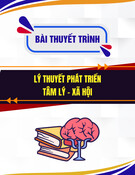
![Sổ tay Hướng dẫn tự chăm sóc trầm cảm [chuẩn nhất]](https://cdn.tailieu.vn/images/document/thumbnail/2025/20251029/kimphuong1001/135x160/3711761720335.jpg)
![Đề cương Tâm lý học xã hội [chuẩn nhất]](https://cdn.tailieu.vn/images/document/thumbnail/2025/20251028/c.dat0606@gmail.com/135x160/99271761707421.jpg)
![Câu hỏi ôn thi Nhập môn khoa học nhận thức [chuẩn nhất]](https://cdn.tailieu.vn/images/document/thumbnail/2025/20251021/aduc03712@gmail.com/135x160/48471761019872.jpg)
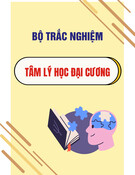
![Đề cương môn Tâm lý học sinh tiểu học [chuẩn nhất]](https://cdn.tailieu.vn/images/document/thumbnail/2025/20251007/kimphuong1001/135x160/51781759830425.jpg)

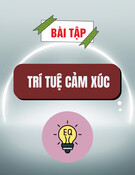

![Tâm lí học lứa tuổi và sư phạm ở tiểu học: Bài thuyết trình [chuẩn nhất]](https://cdn.tailieu.vn/images/document/thumbnail/2025/20250918/vuhoaithuong14@gmail.com/135x160/90941758161117.jpg)
